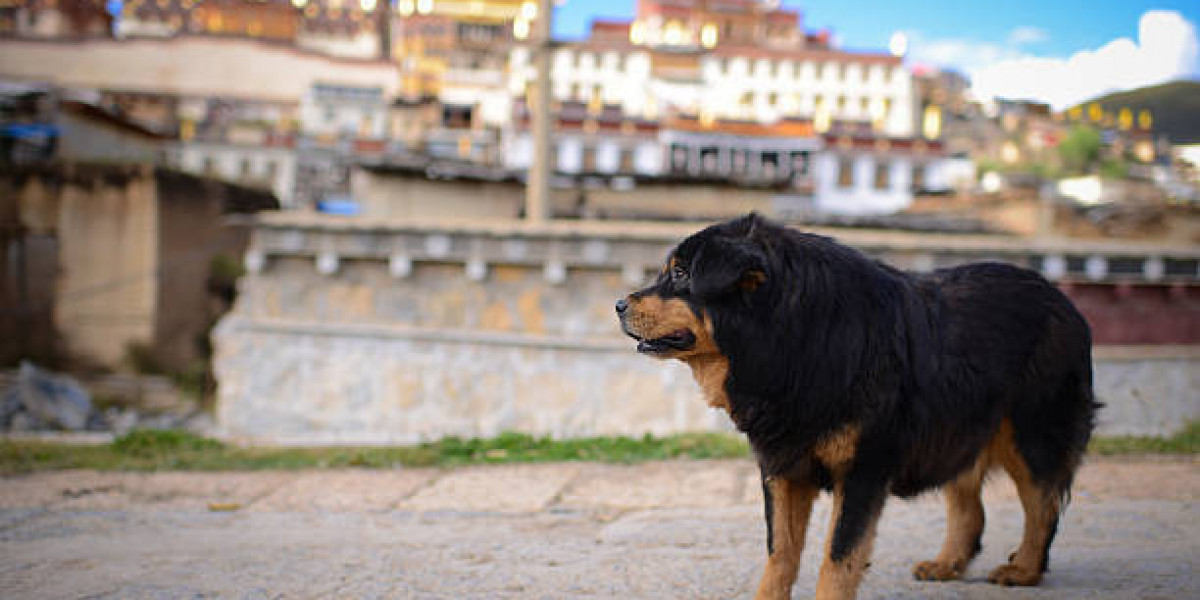High in the remote Himalayan mountains, among ancient monasteries and serene prayer halls, there exists a breed deeply connected to spirituality and devotion. Tibetan temple dogs have been an essential part of Tibetan culture for centuries, cherished not just as companions but as protectors of sacred spaces. Their history dates back to the time when Buddhist monks sought peace and enlightenment in isolation, living within monasteries surrounded by vast landscapes and spiritual energy.
These faithful dogs stood by their side, watching over temples and the monks who lived there. It was believed that they could sense negative forces and keep evil spirits away, making them more than mere animals. Their presence brought comfort and a sense of safety to those living in spiritual solitude. They became symbols of loyalty, awareness, and divine protection, embodying the pure bond between humans and animals that transcended the material world.
Life in the Monasteries
Tibetan temple dogs lived a unique life that reflected both devotion and discipline. The monks who cared for them viewed them with deep respect, often referring to them as guardians blessed with spiritual energy. These dogs would patrol the temple grounds during the day, their alert eyes scanning the surroundings as prayer flags fluttered in the cold mountain wind. At night, they kept silent watch as monks meditated or rested. They were not trained through commands but through presence and patience.
Over generations, these dogs developed an instinctive understanding of their environment, reacting to unseen movements or energies with calm precision. They shared in the monks’ daily rhythm of meditation and mindfulness, adapting to the peaceful atmosphere around them. It is said that their gentle yet strong spirit mirrored the tranquility of the sacred spaces they guarded, making them more than protectors; they became part of the monastery’s living soul.
Distinctive Appearance and Temperament
Tibetan temple dogs possess physical and emotional traits that make them truly remarkable. Their thick, lush coats protect them from the freezing mountain air, while their sturdy build allows them to move gracefully across rocky terrain. Their faces often display a calm intelligence, and their deep, expressive eyes seem to carry wisdom beyond their years. Despite their strength and confidence, they are not aggressive by nature.
Instead, they exhibit quiet watchfulness, showing affection through subtle gestures rather than constant displays of emotion. They are known for their loyalty, independence, and sensitivity to human moods. When they bond with someone, that connection becomes lifelong. They are both protectors and companions, responding with warmth and understanding to those who treat them with kindness. These qualities have made them admired across generations, as they reflect the balance between strength and serenity that defines their heritage.
The Cultural and Spiritual Symbolism
In Tibetan tradition, animals are often seen as spiritual beings, and the role of these dogs within monasteries is a reflection of that belief. Tibetan temple dogs are thought to carry a deep connection to the divine, serving as messengers between the physical and spiritual worlds. Their presence represents purity, awareness, and protection. Monks believed that these dogs could sense the flow of spiritual energy within the temple, guiding them to maintain balance and harmony.
Legends suggest that their watchful eyes could perceive what humans could not, detecting unseen disturbances that might threaten peace. Over the centuries, they became symbols of loyalty and wisdom, admired not just for their physical guardianship but for their quiet spiritual presence. Their story is one of devotion and sacred duty, a living example of how nature and spirituality intertwine within the Tibetan way of life.
Journey Beyond Tibet
As time passed and travelers explored the hidden valleys and monasteries of Tibet, the reputation of these remarkable dogs began to spread beyond their homeland. Their noble appearance, gentle nature, and mysterious background captured the fascination of people worldwide. When a few of them were brought to other countries, they quickly became treasured companions. Yet even as they adapted to new surroundings, their spiritual aura and calm temperament remained unchanged.
Those who raised or studied them came to understand that their uniqueness was not just in their appearance but in their deep connection to mindfulness and peace. In modern times, breeders have worked to preserve the qualities that made these dogs sacred in their origin: intelligence, independence, and loyalty. While they may now live far from the monasteries that shaped them, their essence still carries the spirit of the mountains and the peaceful teachings of the monks who once cared for them.
Living with a Tibetan Temple Dog
Owning such a noble breed is a privilege that comes with understanding and patience. These dogs are naturally intelligent and independent, traits that require gentle and respectful handling. They respond best to calm and consistent companionship rather than strict control. They enjoy being near their family but also value moments of quiet reflection.Because of their history, they often prefer environments that allow them space to observe and think.
Their coats need regular grooming, especially in warmer climates, and they appreciate a balanced routine of activity and rest. While not overly demanding, they thrive when given love and purpose. Their protective instincts remain strong, and they are naturally cautious around strangers, though they quickly warm up once trust is earned. To live with one is to experience a bond rooted in loyalty and mutual respect, a relationship built on understanding rather than dominance.
FAQs
What makes Tibetan temple dogs special compared to other breeds?
Their spiritual history and role as guardians of sacred monasteries set them apart, giving them a unique combination of intelligence, serenity, and loyalty.
Are Tibetan temple dogs good family companions?
Yes, they are deeply affectionate and protective once they form a bond, making them excellent companions for families who respect their independent nature.
How much care do Tibetan temple dogs require?
They need moderate exercise, regular grooming due to their thick coats, and emotional connection with their owners to feel secure and fulfilled.
Do Tibetan temple dogs adapt well to modern living?
They can adapt well to different environments if given proper attention and care, though they prefer calm surroundings that mirror their peaceful heritage.
Are Tibetan temple dogs easy to train?
They are intelligent and observant but require patience during training. They respond best to gentle encouragement rather than strict methods.
Conclusion
The story of Tibetan temple dogs is one of devotion, resilience, and harmony. For centuries, they have watched over temples, shared in meditations, and protected the spiritual heart of Tibet. Their legacy reaches far beyond their physical form, representing loyalty, peace, and wisdom. In them lives a reflection of the spiritual discipline that defines Tibetan culture. Their calm presence and gentle strength remind people that true companionship lies not in control but in understanding.
As they continue to find homes across the world, they carry with them the spirit of the mountains and the teachings of serenity passed down through generations. They are living connections to a sacred past and timeless guardians of peace. The story of Tibetan temple dogs endures as a symbol of how faith and friendship can transcend boundaries, uniting humans and animals in a shared path of harmony and devotion.








